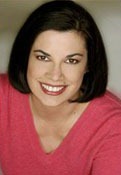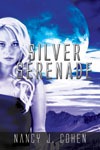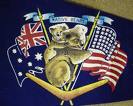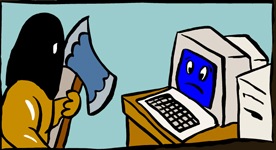By: Kathleen Pickering
It’s my turn to post the first page of a work and offer my opinion—of which, I will stress is merely that. One of my fantasies about reading new, anonymous work is that I would come to discover that I critiqued the next block-busting novelist. Could this one be he/she?
The Table
When Noa Torson woke up, the first thing she noticed was that her feet were cold. Odd, since she always wore socks to bed. It was bright, too—and she hated sleeping in a bright room, had even installed blackout curtains over her apartment’s sole window so that morning light never penetrated the gloom. She squinted against the glare, trying to make sense of her surroundings as her eyes adjusted. Her head felt like it had been inflated a few sizes and stuffed with felt. She had no idea how she’d ended up here, wherever here was.
Was she back in juvie? Probably not, it was too quiet. Juvie always sounded like a carnival midway, the constant din of guards’ boots pounding against metal staircases, high-pitched posturing chatter, the squeak of cots and clanking of metal doors. Noa had spent enough time there to be able to identify it with her eyes closed. She could usually even tell which cell block she’d been dumped in by echoes alone.
Voices intruded on the perimeter of her consciousness—two people from the sound of it, speaking quietly. She tried to sit up, and that was when the pain hit. Noa winced. It felt like her chest had been split in half. Her hand ached, too. Slowly, she turned her head.
An IV drip, taped to her right wrist. The line led to a bag hanging from a metal stand. And the bed she was lying on was cold metal—an operating table, a spotlight suspended above it. So was she in a hospital? There wasn’t that hospital smell, though, blood and sweat and vomit battling against the stench of ammonia.
Noa lifted her left hand: her jade bracelet, the one she never took off, was gone.
That realization snatched the final cobwebs from her mind.
Cautiously, Noa raised up on her elbows, then frowned. This wasn’t like any hospital she’d ever seen. She was in the center of a glass chamber, a twelve-by-twelve foot box, the windows frosted so she couldn’t see out. The floor was bare concrete. Aside from the operating table and the IV stand, rolling trays of medical implements and machines were scattered about like an archipelago of islands marooned in a grey sea. In the corner stood a red trash bin, “MEDICAL WASTE” blaring from the lid.
***
Wow. Now that’s a nightmare to which I NEVER want to awaken. Am I hooked? Hell, yeah! This catapults “The Perils of Pauline” to the stratosphere–and, she’s not even tied down.
First off, the first three paragraphs delivered so much information so incredibly (what seems) effortlessly, while ratcheting up the tension, that this writer is no amateur. We learn Noa is tough, opinionated, world-weary and intelligent. Noa gives us insight into a world (Juvie) with so much detail, that you can taste the coppery resentment she holds against society. And now, as if she hasn’t been “processed” enough through life, she is stretched out on an operating table for the final dissection.
Is she in danger, or was she hurt and being aided? Holy smokes. I WANNA KNOW!
A poet at heart, I’m hugely into symbolism. This page is loaded with it. For example:
1. The “sole” window apartment and sleeping in the “gloom”—As if living in a rabbit hole, Noa has seen enough. When she’s most vulnerable she wants safety from the world.
2. Her jade bracelet missing –Jade symbolizes justice, renewal, contentment and courage. She never took it off. It’s gone. Now she has to go it alone.
3. A 12 by 12 frosted glass box and concrete floor—a reflection of her view of the world: cold, confusing, hard, unwelcome.
4. Two people whispering –nothing is ever clear. She always has to be on guard.
5. The Medical Waste trash bin –Is that what her life has been reduced to?
Next, every action verb (installed, pounded, dumped, scattered, split, battling), every description (blackout, clanking, squeaking, metal, cold) was perfectly chosen to create mood and move the plot forward. Not a feat for the unfocused writer. This author knows exactly what she/he is doing with word choice to make the reader empathize and act with the character.
Now, I know when given the chance to read on, I will learn her age (though I suspect she’s either still a juvie or a recent graduate), occupation, where she lives, why her bracelet is so important, why her chest hurts and what she was doing before awakening on this Table. But, let me point out, this page was so expertly crafted with concrete (not vague) impressions in this woman’s mind, that these questions created a need to know more; hence, a page turner.
Excellent writing. When can I read the book?



 Nancy J. Cohen
Nancy J. Cohen



